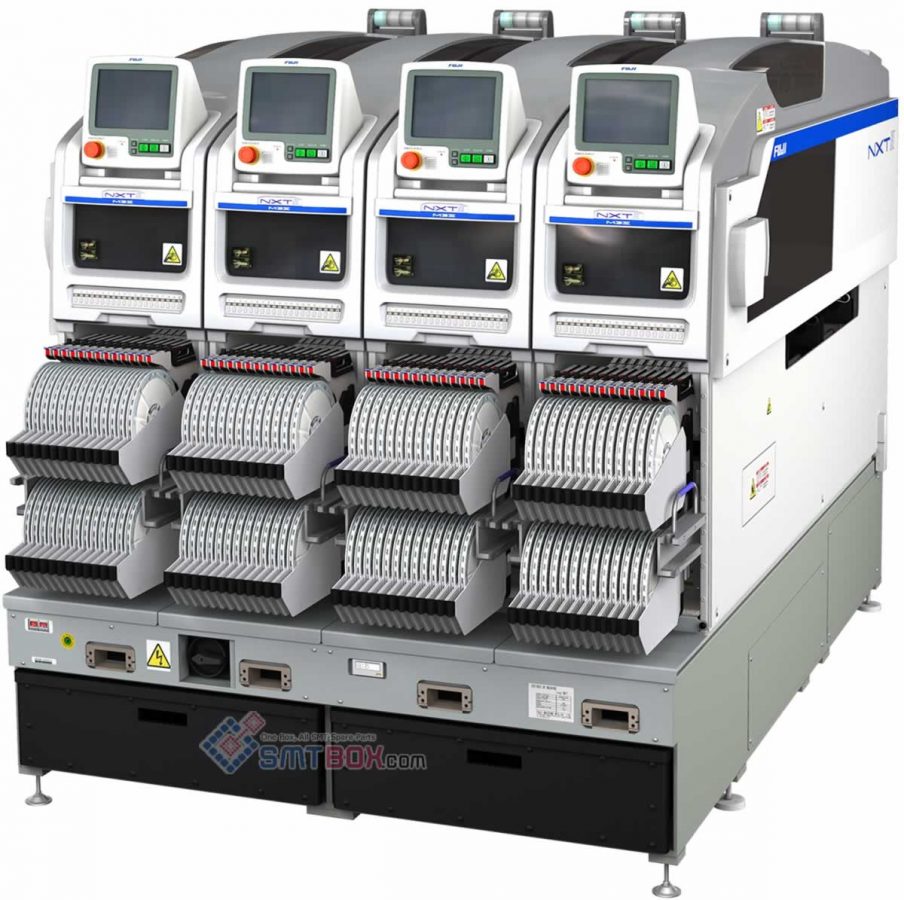After balancing the line, the parts need to be distributed to the different modules and the sequences for each module need to be arranged in the optimum order to minimize cycle time.
The optimizer is used to arrange the sequences in the best order. In addition to the optimizer within Job Builder, there is another optional optimizer for optimizing different jobs or sides.
NXT Dual Production Optimizer is capable of optimizing two different jobs to run on different lanes or two sides of a panel using two different lanes. For procedures on using this optimizer, refer to the section Dual job optimizing.
3.5.1 Optimizing in Job Builder
The following procedures are used for optimizing one job only.
1. Select [Optimize…] from the [Tools] menu to display the [Optimize Options] dialog box.
2. To optimize the feeder arrangement, select the [Allocate feeders] option. After specifying the desired settings, click [OK] to display the [Select Machine] dialog box.
3. Select the desired machines, and click [OK].
4. Click [Yes] in the confirmation dialog box to confirm that optimization is to be performed for the selected machines.
5. The [Optimize] dialog box displays. In this dialog box, the status of the optimization process displays along with any errors. If any errors occur, click [Error Details] to display further details. Click [Close] when the optimization process is complete.
Note: Once the job has been optimized, it can be transmitted to the NXT machine. It is not necessary to generate recipes for the NXT.
3.5.2 Dual job optimizing
In order to perform dual job optimization, it is necessary to have the optional software, NXT Dual Production Optimizer, installed on the computer.
1. Ensure that both jobs for which optimization is to be performed are complete in the terms that they can be used to produce panels.
2. Click the [Start] button, point to [Programs] > [Fuji Flexa] and then click [NXT Dual Production Optimizer]. The first step of the wizard displays.
3. Specify whether optimization to to be performed between two different jobs or for both panel sides for one job by selecting the appropriate option.
4. After selecting the desired job option, click the button with the three periods to the right of the job text box for lane 1. A dialog box displays the available jobs.
5. Select the desired job to be produced using lane 1 and click [OK]. The name of the job then displays in the job text box.
Note: If an error occurs about not being able to open the job, ensure that the job is not currently opened. Opened jobs cannot be selected.
6. Specify the panel side for the selected job by using the drop-down list to the left of the button.
7. If two separate jobs are to be optimized, then repeat steps 4 to 6 for Lane 2.
8. Click [Next].
9. Select the machine to be optimized,
10.Select any desired optimization options and clear any unwanted options.
11.Click [Next] and the optimization process begins. The current status of the optimization process displays in a message box. When the optimization processing is completed, the final step of the wizard displays with the cycle time for each module.
12.To view a text file with a breakdown of the cycle times, click [Report]. To save the optimization processing back to the jobs, click [Save]. When [Save] is clicked, the results are saved. If the optimization results are not to be used, proceed to the next step without clicking [Save].
13.Click [Cancel] and the wizard is closed.
